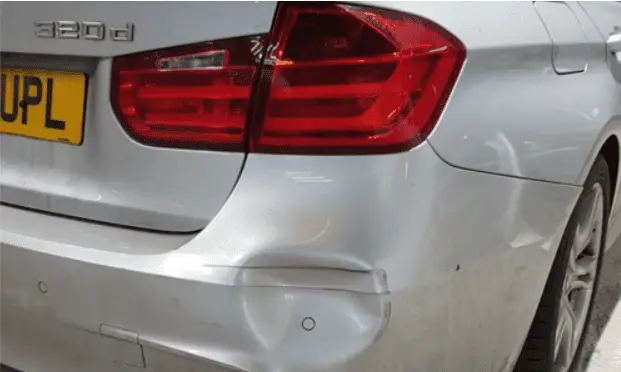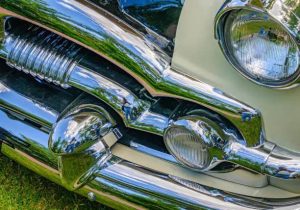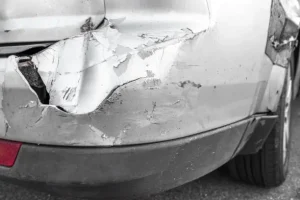Introduction
The process of bumper reconditioning aims to restore the appearance and original function of a car’s bumper. This process includes repairing scratches, removing cracks and dents, and similar fixes. Therefore, it’s essential to be aware of the steps involved and the associated costs to make the right decision and choose the appropriate Bumper repair near me.
bumper reconditioning
The bumper reconditioning process is considered a maintenance, repair, and renewal process for both the front and rear bumpers of a car, aimed at improving its appearance and performance. This process includes all types of Bumper Repair Houston Texas, starting from fixing scratches and cracks, repainting, and repairing distortions, to replacing damaged parts. Reconditioning is more cost-effective compared to completely replacing the bumper.
Fix Your Bumper Today – High-Quality Repairs, Low-Cost Solutions!
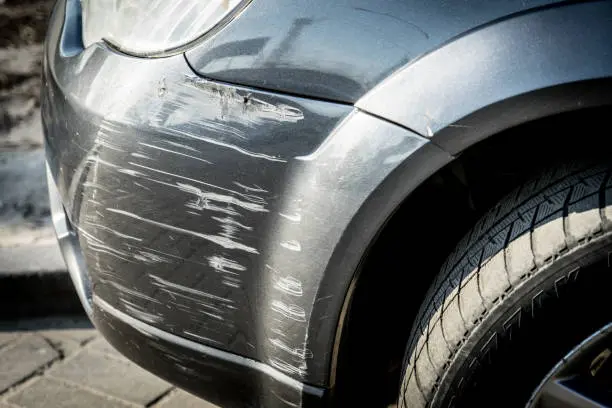
What is a reconditioned bumper cover
A bumper reconditioning of bumper’s cover refers to a bumper cover that has been repaired and renewed instead of being replaced. To achieve this, technicians assess the existing damage and repair it. They fill cracks and scratches, and if the cover has lost its color or has been worn down, they repaint it. Additionally, if there are any structural distortions, they repair them as well. Rather than replacing the entire bumper, they attempt to replace only the damaged parts.
Reconditioned Front and Rear Bumper Bars
There isn’t a big difference between bumper reconditioning for front and rear bumpers, but front bumpers are generally more prone to damage. Additionally, Front bumper reconditioning may require more precise repair work as they might contain air vents and front sensors, which aren’t usually present in rear bumpers.
Steps for Effective Bumper Reconditioning
Damage Assessment
Technicians carefully inspect the bumper to identify the damage accurately so they can evaluate the extent of the damage and determine the appropriate bumper reconditioning method.
Bumper Cleaning
Technicians clean the bumper thoroughly using a specialized cleaner to remove any dirt and oils that might interfere with the repair process.
Removing Damaged Paint
Technicians use sandpaper to remove any cracked or damaged paint on the bumper surface.
Repairing Cracks and Scratches
In this step, technicians use suitable materials like fiberglass resin to fill large cracks or scratches.
Surface Sanding
Technicians use fine sandpaper to smooth the surface so that it aligns with the rest of the bumper.
Applying Primer Coat
In this stage, technicians apply a primer coat to the bumper to prepare it for the final paint application. This layer helps the paint adhere better and improves the final appearance.
Painting
Technicians apply the final paint layer using a color that matches the car’s original paint, ensuring an even and attractive look. They may apply multiple thin coats of paint.
Drying and Polishing
In this final stage, technicians let the paint on the bumper dry completely, then polish it to add extra shine and protection.
Contact us now for fast, affordable bumper repair services!
Common Bumper Damage
Surface Scratches
Surface scratches occur when the car collides with hard objects or rough surfaces, like walls, curbs, and similar surfaces surface scratches can be repaired easily during bumper reconditioning.
Cracks
Bumpers can develop cracks due to minor collisions. The size and depth of these cracks vary, and some deep cracks may require comprehensive repair or replacement of the bumper.
Bumper Dents
A bumper dent occurs when the bumper hits another object, such as another car. The repair of the dent depends on the extent of the damage.
Paint Damage
The bumper’s paint can be damaged by collisions or environmental factors, causing the bumper to lose its aesthetic appearance and increasing the risk of corrosion.
Complete Bumper Breakage
In some major accidents, the bumper may experience complete breakage, making it difficult to repair, and requiring a full replacement.
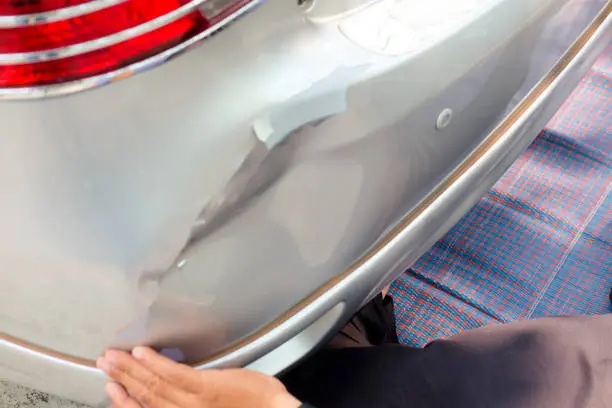
Bumper Reconditioning Methods
Repairing Scratches and Cracks
Surface scratches and cracks are repaired using strong adhesives or specialized fillers to fill in the cracks and scratches. Afterward, the surface is sanded to make it level with the rest of the bumper.
Removing Damaged Paint
If the paint is damaged, sanding tools are used to remove the damaged or cracked paint, and the surface is then prepared for new paint. If you need to repair and repaint the bumper, you will have to pay the bumper repair and paint cost
Repairing Dents
Dents are repaired during bumper reconditioning using specialized equipment to pull out the dented areas. Heat techniques can also be used to repair the dent by reshaping the bumper.
Repainting the Bumper
The bumper may need to be repainted in many cases. This is done using paint similar to the car’s color, ensuring a cohesive and attractive appearance.
Rechroming
If you want to Restore Chrome Bumper, and the chrome layer is damaged, the bumper can be re-chromed using specialized techniques
Using Fiberglass
Fiberglass and resin are used to repair the bumper in cases of deep cracks.
How much does it cost to refinish a bumper
The cost of bumper reconditioning in Texas ranges from $150 to $450, depending on several factors. These include the extent of the damage—where complex damage will naturally increase the cost as well as the type and quality of paint, the location of the repair, and labor fees.
Contact us for reliable, affordable bumper repair services now!
How do you rejuvenate a plastic bumper
Cleaning
Thoroughly clean the bumper using water and car soap to remove any dirt or grease that may hinder the bumper reconditioning process.
Drying
Completely dry the bumper with a soft cloth.
Scratch Removal
Remove surface scratches using 3000-grit sandpaper to eliminate light scratches.
Polishing
Polish the bumper with a suitable compound specifically made for plastic bumpers.
Applying Paint or Protective Coating
After polishing, you can use a special product to restore color or apply marine-grade paint to protect the bumper from weather elements.
Adding a Wax Layer (Optional)
You can apply a wax layer for added protection and shine to your car’s bumper
N: B In general Plastic bumper repair cost. Is less than metal bumpers and you can perform it by yourself if you know How to repair plastic bumper scratches and cracks
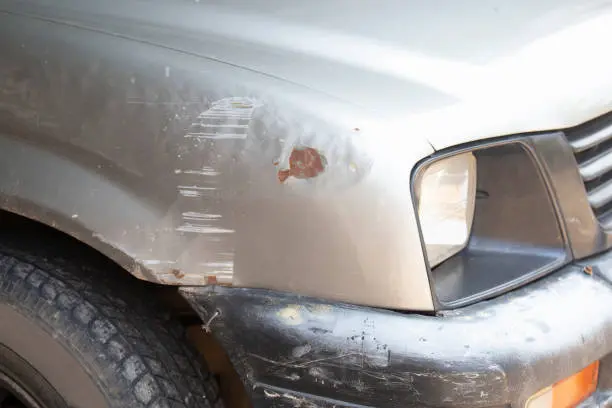
Can bumper cracks be repaired?
Of course, bumper cracks can be repaired in most cases, as long as the damage is not too severe, such as very deep cracks, large fractures, or damage that affects the bumper’s structure. However, if the cracks are shallow or the damage consists of scratches, it can be easily repaired during bumper reconditioning using filler or epoxy All you need to do is bring the bumper repair kit Some deep cracks can also be repaired using materials such as fiberglass or resin, and so on.
How much does re-chroming bumpers cost
The average Bumper reconditioning cost ranges from $500 to $1,500, varying based on the size of the bumper and the type and quality of chrome used. The Bumper repair cost will certainly increase with higher-quality chrome. if you need to polish chrome bumper this will increase the cost too Prices also vary from one shop to another depending on the shop’s location and reputation you should search for a professional Body shop near me
DIY Bumper Reconditioning
Cleaning
Clean the bumper to remove any dirt or materials that might hinder the bumper reconditioning process. If the bumper is plastic, avoid using abrasive materials to prevent damage to the surface. If it’s metal, you can use a brush for cleaning.
Drying Process
Dry the bumper with a soft cloth and make sure it is completely dry before proceeding with any other steps.
Scratch Removal
For plastic bumpers, you can remove scratches using fine sandpaper (3000 grit), making sure not to damage the plastic during sanding. If the bumper is metal, use coarser sandpaper (like 1500 grit) to remove both rust and scratches.
Polishing
Use a polishing compound suitable for the type of bumper you have, whether it’s plastic or metal, to make the bumper shiny and beautiful.
Protective Layer
Use a product to restore color or a protective coat designed for plastic if your bumper is plastic. If it’s metal, apply rust-resistant paint or metal wax to protect the bumper from environmental factors and rust.
Bumper reconditioning in Houston TX
Experience and Reputation
At West Side Collision, we have technicians with years of experience in car repairs and bumper reconditioning, having dealt with many types of vehicle damage, which ensures that your car is in good hands.
Services Offered
The services provided at West Side Collision are of the highest professional standards, and we use the latest equipment and techniques for car repairs.
Pricing and Transparency
At West Side Collision, we are completely honest with you about pricing. We don’t hide any costs or surprise you with unexpected prices at any stage of the service.
Time Required for Repairs
At West Side Collision, we understand that your time is valuable, so we work efficiently to complete your repairs as quickly as possible while maintaining precision and quality in the process.
Westside Collision offers a comprehensive range of bumper Reconditioning
At West Side Collision, we offer professional and precise reconditioning of bumper services. We have a strong reputation in the auto repair market, as our technicians have years of experience. We provide bumper reconditioning services with the highest quality standards, completed as quickly as possible, with full price transparency and detailed information. Contact us now to learn more about our services and the latest offers, so your bumper can look as good as new.
Conclusion
bumper reconditioning helps maintain its beautiful appearance and performance, which increases its value when selling and saves you the cost of replacement. Therefore, you should be aware of all the details related to reconditioning of bumper and its costs so that you can do it yourself if possible, or choose the right Bumper reconditioning near me.


